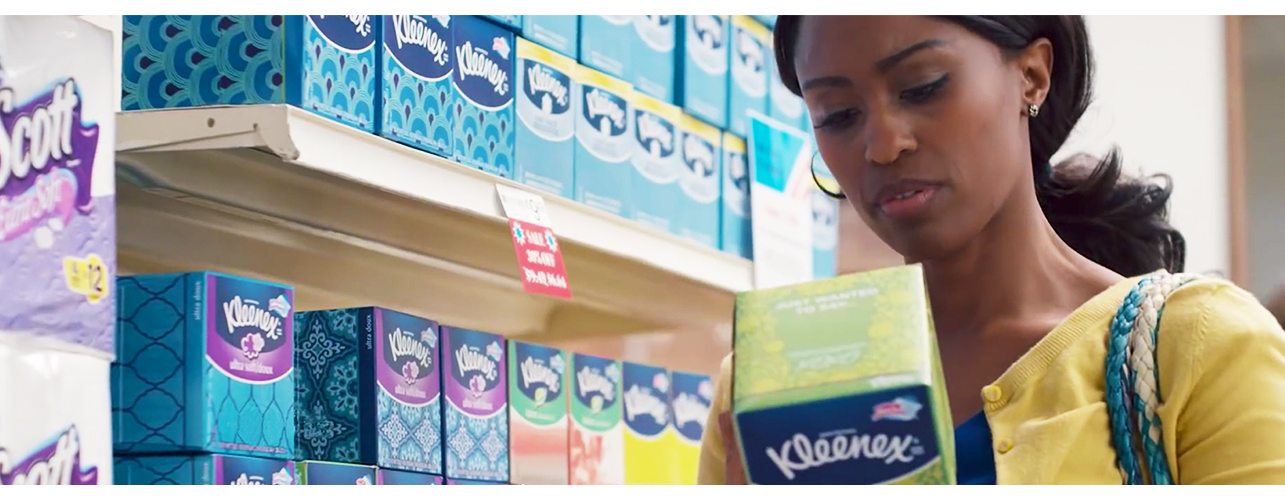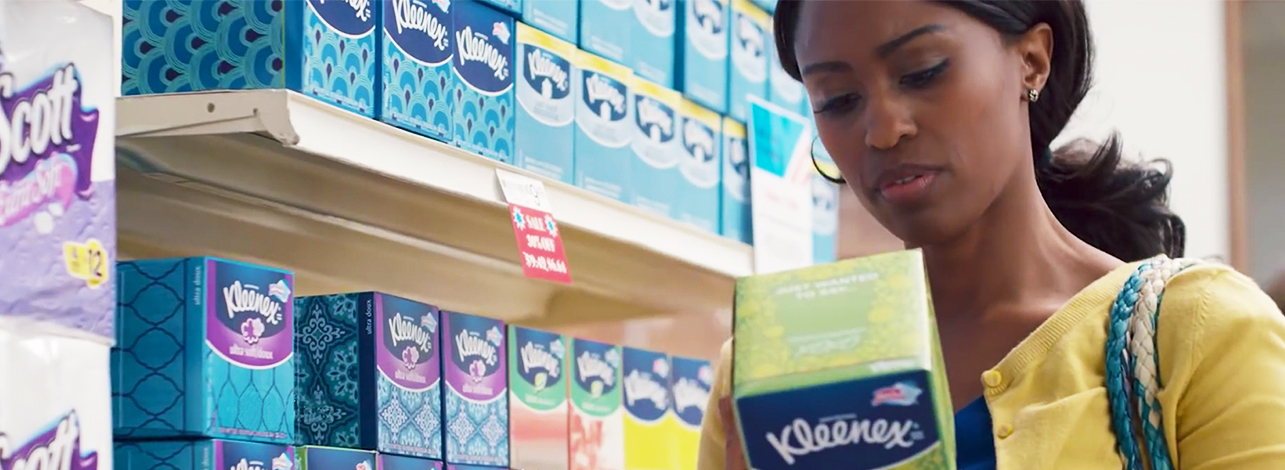Product, Packaging & Circular Systems
Kimberly-Clark seeks to support the transition to a circular economy by taking a comprehensive approach to plastics management and reduction. This ambition includes improving waste-handling systems and innovating to provide consumers more sustainable alternatives that meet their needs, while improving resource efficiency and reducing waste. These efforts also allow us to contribute to the objectives of UN Sustainable Development Goal 12, Responsible Consumption and Production.
Aspirations & Goals
Kimberly-Clark's aspiration is to reduce our plastics footprint by 50% through (1) reduction/material efficiency, (2) use of renewable, recycled, or biodegradable substitutes, (3) introduction of reusable products, (4) recover and recycle plastic manufacturing waste and post-consumer waste, (5) support for the development of circular systems and solutions.
Goals that support our 50% plastic footprint reduction:
- 50% reduction in the use of new, fossil-fuel-based plastics by 2030, from a 2019 base year1
- 75% of the material in our products either biodegradable2 or recovered and recycled by 2030
- 100% of our packaging reusable, recyclable, or compostable by 2025
- 20% average recycled content across plastic packaging by 2025
- 100% of our manufacturing waste diverted from landfill to beneficial uses3
Learn more about our plastic goals and progress in our 2022 Sustainability Progress Report
Strategy & Approach
Collaborating across our research, engineering, and marketing teams and with our commercial partners, we are seeking ways to reduce our use of traditional plastics, accelerate development of renewable and recycled substitutes, and contemplate alternative product solutions. We also recognize the need to work with key external partners to promote and inform the transition to a more circular economy and provide effective post-consumer solutions to waste. This requires a deep understanding of how products are designed, used, and disposed of in diverse markets, cultures, and regulatory systems around the world.
The complexity of the interconnected environmental challenges also requires that our approach be informed by science, so we are continuing to use life-cycle assessment to help us understand potential tradeoffs and co-benefits associated with our plastics footprint reduction efforts. These assessments deepen our understanding of environmental impacts across the value chain, from raw materials to production and distribution to use and beyond.
Our strategic focus includes three key areas:
1.
Packaging:
While most of our packaging is currently reusable, recyclable, or compostable, we know there are ongoing challenges associated with packaging films. Availability to recycle flexible film packaging can be challenging where recycling systems are not well established, but we anticipate that growing demand for recycled plastic will play a role in accelerating collection and recycling. We also continue to replace virgin, fossil-fuel-based plastic packaging with more recycled content.
2. Product:
By weight, a majority of the materials in our products are comprised of responsibly sourced biodegradable or recycled fibers. Our focus now includes defining options to shift from traditional
plastics to renewable, degradable, or recovered materials while maintaining the high standards of quality and performance our consumers expect from our trusted brands. Huggies Special Delivery is an example of these efforts in action.
3.
Circular Systems.
We believe that to be successful in our ambitions we need to support development and maturation of waste management infrastructure in both emerging and mature markets. These systems are essential to furthering the recovery and processing of our products and packaging after use. To identify suitable solutions for local contexts, we’re focused on establishing collaborative external partnerships with waste management experts, NGOs, and communities. By creating partnerships and building on existing waste management infrastructure, we develop new business models that can support the management of waste from our products and packaging and be scaled in emerging or mature markets.
Recent Performance & Metrics
See highlights of Kimberly-Clark's 2022 product and packaging efforts here.
See our data on product, packaging & circular systems here.
Partnerships for a Circular Economy
ReSource Plastic: A global, multi-stakeholder initiative helping companies implement strategies and solutions to help reduce plastic pollution and support circularity.
Bioplastic Feedstock Alliance (BFA): BFA is a multi-stakeholder forum for collaboration and knowledge sharing to drive the shift toward responsible sourcing of plant-based plastics known as bioplastics, and to create a more circular economy.
U.S. Plastics Pact: Collaborative initiative that seeks to unify stakeholder approaches to design, use, and reuse across the entire plastics value chain. Kimberly-Clark (Consumer & KCP) is a Founding Activator of the Pact.
Canadian Plastics Pact: Collaborative initiative that seeks to unify stakeholder approaches to design, use, and reuse across the entire plastics value chain with a focus on packaging in the Canadian market.
New Materials Institute (University of Georgia):
Helps industry and businesses adopt bio-based,
biodegradable, or recyclable materials and material-management systems that generate less waste and promote circularity
UK Plastics Pact: Brings together businesses from across the plastics value chain, the UK government, and NGOs to help tackle plastic waste through the delivery of ambitious 2025 commitments.
Duitin and Octopus: Circular economy platforms that help producers track and collect their post-consumer products for both recyclable and non-recyclable waste. Both companies have been working with Kimberly-Clark Softex in Indonesia as part of the collection leg of our used baby diaper recycling project. Collection is done via a convenient online application where consumers can connect with these companies and their teams of waste pickers to collect the used diapers.
REDCycle: Sets up collection points where consumers can drop off certain flexible plastic packaging used in Kleenex, Cottonelle, and Huggies products.
Published May 2023










